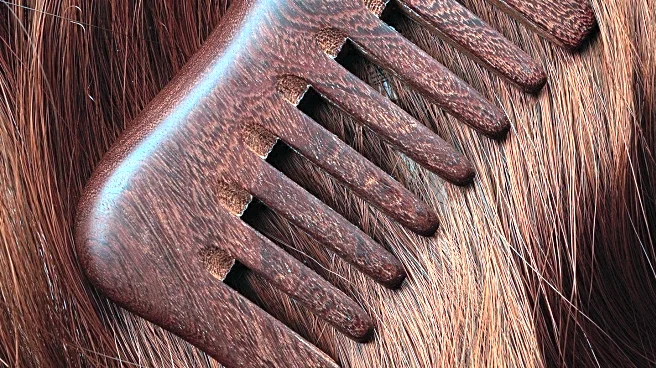What is the story about?
What's Happening?
Researchers at the University of St. Andrews have discovered a khipu, an ancient Incan recording device, made entirely of human hair. This finding challenges previous assumptions that khipu production was exclusive to the ruling elite, suggesting that commoners may have also engaged in this practice. The khipu, dated to around 1498, was analyzed for its composition, revealing dietary habits indicative of lower social status. This discovery may lead to a reevaluation of the role of khipus in Incan society, potentially indicating widespread literacy and record-keeping among various social classes.
Why It's Important?
The discovery of human hair in the khipu could reshape historical understanding of the Incan Empire's social structure and literacy. It suggests that record-keeping was not limited to the elite, but may have been a common practice among lower-status individuals. This challenges colonial narratives and offers a more inclusive view of Incan history. The implications extend to modern khipus, which are often made by lower-status individuals, indicating a continuity of tradition. This finding could inspire further research into museum-held khipus, potentially uncovering more about Incan society.
What's Next?
Researchers may begin re-examining existing khipus in museum collections to identify similar uses of human hair, potentially uncovering more about the social dynamics of the Incan Empire. This could lead to a broader understanding of Incan literacy and record-keeping practices. The study may also prompt historians to reconsider colonial accounts of the Incan Empire, integrating indigenous perspectives and sources. Further analysis of khipus could reveal more about the daily lives and social structures of the Incan people.
Beyond the Headlines
The use of human hair in khipus raises ethical questions about the representation of indigenous cultures in historical narratives. It challenges the perception of literacy and record-keeping as exclusive to elite classes, suggesting a more egalitarian society. This discovery could influence how historians approach the study of pre-Columbian societies, emphasizing the importance of indigenous knowledge systems. It also highlights the need for museums to collaborate with indigenous communities in interpreting artifacts.
AI Generated Content
Do you find this article useful?

